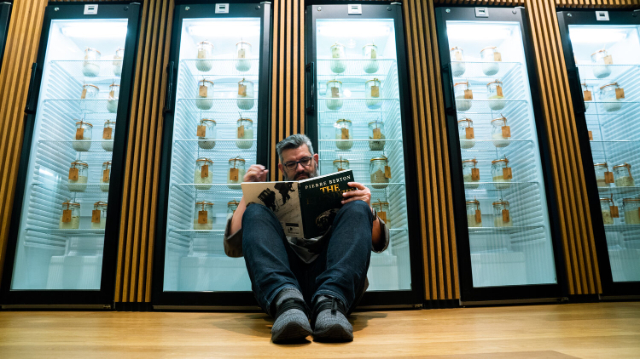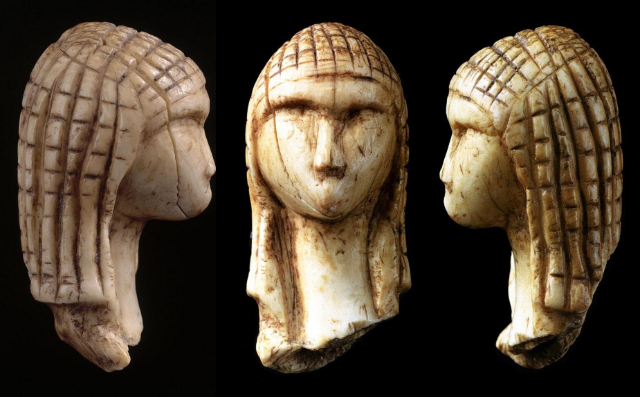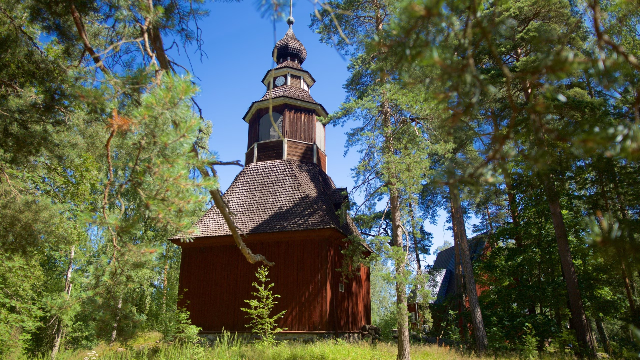Puratos launched the world’s only mother yeast library in 2013. Located in the village of St. Vith, 140 kilometers southeast of Brussels, the library now houses the world’s largest collection of mother yeast. Karl De Smedt lives this Mother Yeast Quest every day. He is Puratos’ dedicated "sourdough librarian," traveling the world in search of ancient bread traditions and preserving sourdoughs in the Puratos Sourdough Library since 2013.WHAT IS THE SOURDOUGH LIBRARY?Traditions are passed down, adapted, evolved, or even forgotten. Puratos believes that today’s bakers should have access to the knowledge of the 250 generations of bakers who came before us. That’s why we research and preserve the heritage of bread in our Sourdough Library and reintroduce this baking tradition with our O-tentic and Sapore sourdough ingredient assortment. Karl De Smedt, the sourdough librarian, explains:"In 2013 we decided to provide a true source of heritage for bakers and consumers around the world. An open source, to boot. The Puratos Sourdough Library now houses an extraordinary collection of sourdoughs. However, we do not own it. It is a non-profit initiative and the sourdoughs remain the property of their respective owners. It is Puratos’ way of contributing to the bread heritage. Today, more than 130 sourdoughs from over 23 countries are analyzed and preserved for future generations. Every 2 months, the sourdoughs are refreshed with their original flour, following their original recipe. In this way, we ensure that the microbial culture of the sourdough starter is stable."The Sourdough Library really shows how wide the variety of sourdoughs, flavors and breads is. Each sourdough has its own culture and shapes different breads. Reintroducing this complexity into modern bakeries is the right way to go. In conclusion, modern technology and Puratos’ expertise in sourdough make it possible to control every aspect of the sourdough bread baking process, from artisanal to industrial production. With many large bakeries launching their own long-fermented breads with sourdough, sourdough is here to stay and promises to play an important role in the baking of the future.DISCOVER THE HISTORY OF SOURDOUGHUNDERSTAND THE FULL SCOPE OF SOURDOUGH FERMENTATIONProfessors, professionals and baking enthusiasts flock to the Puratos Sourdough Library to study the microbial composition of traditional bread baking. For example, universities have studied how bakers’ hands influence microbial culture. We also investigated the stability of microbial cultures in sourdough starter with Rob Dunn, professor of applied ecology at North Carolina State University. And together with our partner, Professor Marco Gobbetti of the University of Bari and Bolzano in Italy, we analyze the composition of microorganisms on a daily basis. So far, more than 1,300 microorganisms have been recorded, making sourdough perhaps the most complex ingredient in bread baking. Only by fully understanding the extent of sourdough fermentation can we discover the full potential of bread. New research shows that sourdough can affect not only the taste but also the digestibility of bread. Clearly, the benefits of long fermentation and sourdough on well-being are gaining greater understanding and thus gaining popularity.Although rich in diversity, the Sourdough Library may only add about 20-25 new sourdoughs to its collection each year. But this is without harnessing the power of the online community. "At www.questforsourdough.com anyone can put their mother yeast on the map and make it known to the world. It is this online collection that really shows how vast the variety of sourdough is." Since the website was launched in late 2016, more than 2,300 sourdoughs from about 100 countries have been registered. It is the largest online collection of sourdoughs in the world and is open for everyone to explore.JOIN THE TRADITION, CREATE YOUR FUTUREWe collaborate with our customers to make successful sourdough breads. While they are masters at creating their bread, bakers can rely on us to master the fermentation of our O-tentic and Sapore sourdoughs. By understanding every aspect of natural fermentation, we provide bakers with the consistency they need and the diversity of flavors consumers expect.WHAT IS SOURDOUGH?Sourdough is a natural agent used to make bread that ferments and leavens bread. It is composed of flour, water, microorganisms, lactic acid bacteria, and yeast, which occur naturally in the basic ingredients. The flavor of sourdough depends on the microorganisms and their association and can vary greatly. There are numerous types of sourdough, and each imparts a unique taste to bread.













